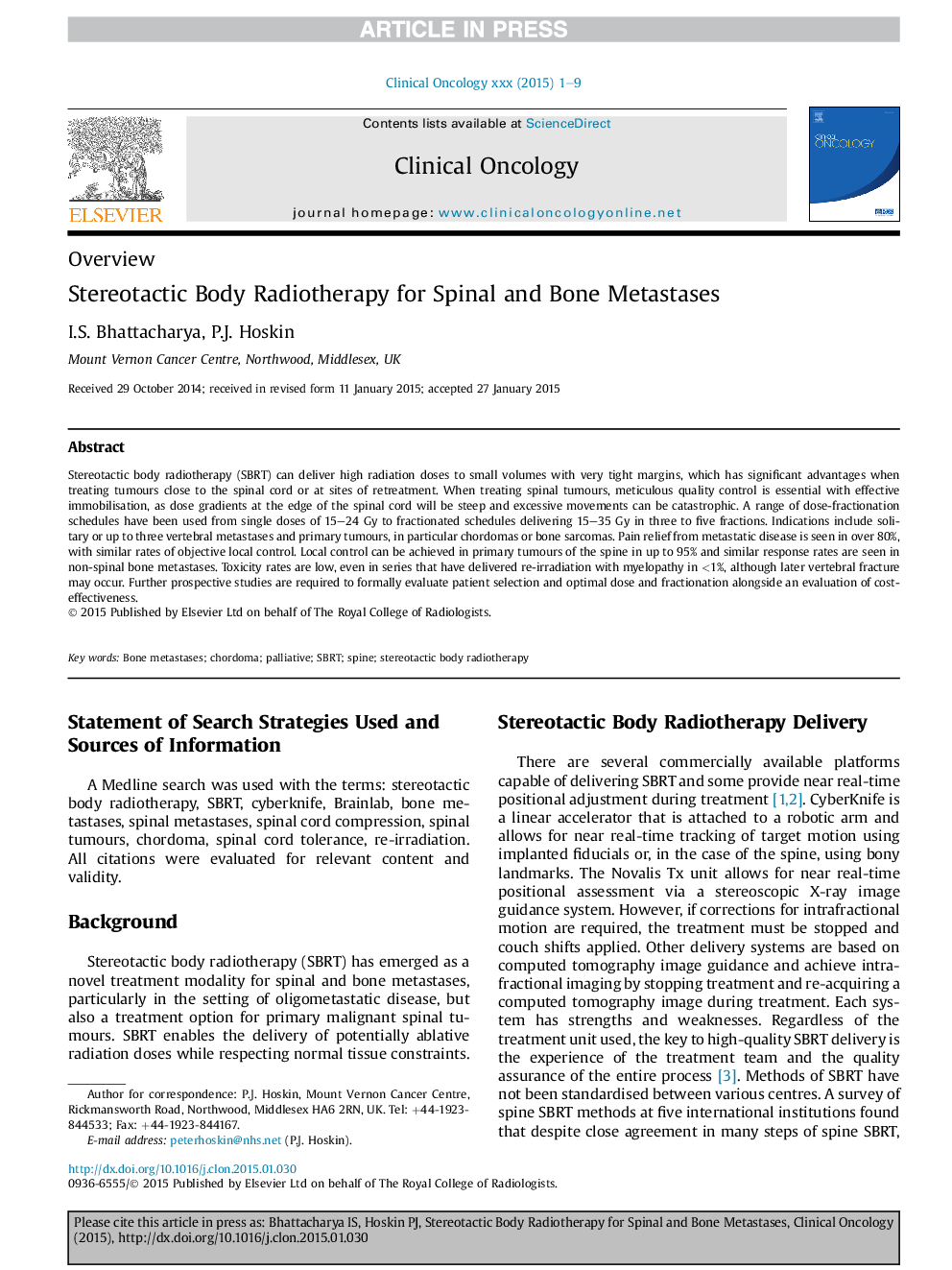| Article ID | Journal | Published Year | Pages | File Type |
|---|---|---|---|---|
| 5698544 | Clinical Oncology | 2015 | 9 Pages |
Abstract
Stereotactic body radiotherapy (SBRT) can deliver high radiation doses to small volumes with very tight margins, which has significant advantages when treating tumours close to the spinal cord or at sites of retreatment. When treating spinal tumours, meticulous quality control is essential with effective immobilisation, as dose gradients at the edge of the spinal cord will be steep and excessive movements can be catastrophic. A range of dose-fractionation schedules have been used from single doses of 15-24Â Gy to fractionated schedules delivering 15-35Â Gy in three to five fractions. Indications include solitary or up to three vertebral metastases and primary tumours, in particular chordomas or bone sarcomas. Pain relief from metastatic disease is seen in over 80%, with similar rates of objective local control. Local control can be achieved in primary tumours of the spine in up to 95% and similar response rates are seen in non-spinal bone metastases. Toxicity rates are low, even in series that have delivered re-irradiation with myelopathy in <1%, although later vertebral fracture may occur. Further prospective studies are required to formally evaluate patient selection and optimal dose and fractionation alongside an evaluation of cost-effectiveness.
Related Topics
Health Sciences
Medicine and Dentistry
Oncology
Authors
I.S. Bhattacharya, P.J. Hoskin,
